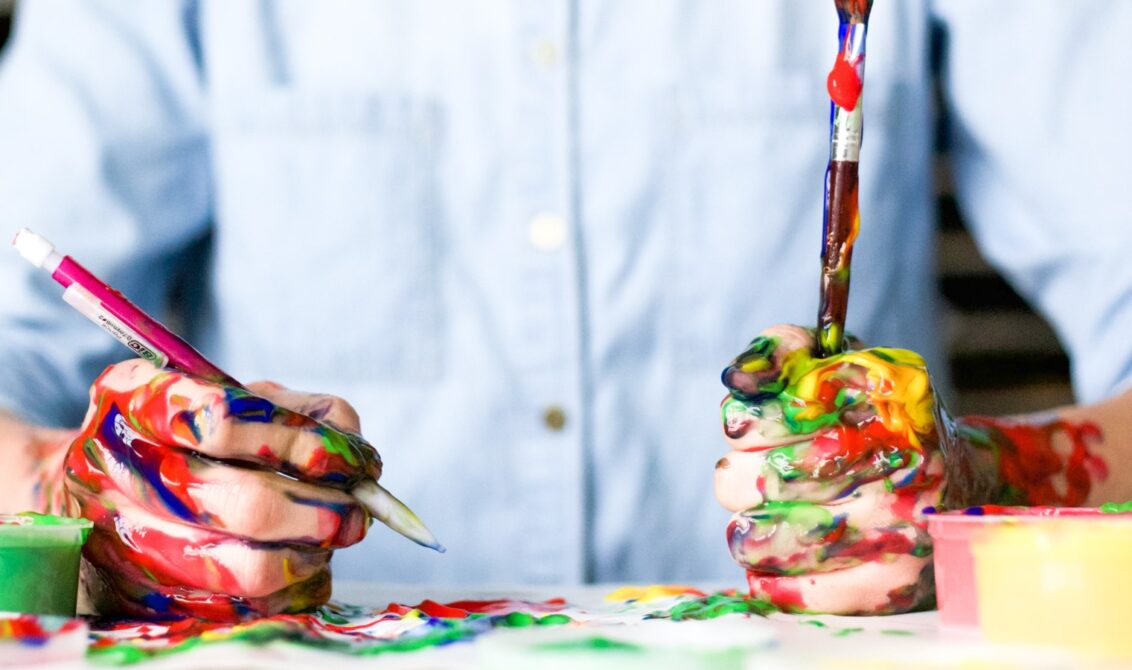
In recent years, many institutions have experienced cuts to the arts. In the UK this has meant reduced lesson time, staff and resources for creative pursuits. In the US there has been more of a push towards traditional STEM subjects. And a study in Turkey recently found a creativity gap between students’ in school and out-of-school activity.
Sadly, as a recent Forbes article states: “Before our kids walk into their first day of school, we have closed doors on passion, imagination, discovery, and problem-solving.”
Creativity is a valuable skill for adults as well as children. But thanks to the external pressures of teaching, restricted curriculums and standardised marking, it’s often one we fail to explore in ourselves.
Why is creativity important?
Let’s take a look at why creativity in the classroom is so important, and find out how you can tap into your own creativity to unlock your students’ potential.
Creativity helps to future-proof your job
Dubbed one of the most important 21st century skills by researchers, creativity is becoming increasingly valued in the workplace. Evidence for this is shown in a report by the World Economic Forum, whereby creativity moved from the tenth to the third most important work-related skill over the last five years.
So why is this? In a rapidly changing world, where new jobs are constantly on the horizon, and current ones are falling by the wayside, creativity is something that can’t be automated. That’s why creative jobs are the least vulnerable in today’s society.
In other words, if you’re an engaged and creative teacher you’re less likely to get replaced by an instructional video.
Creativity is multi-disciplinary
Creativity doesn’t just mean drawing, painting and model making. It is a multi-disciplinary skill, spanning the realms of technology, politics, maths and languages.
So what does that mean when it comes to teaching? Creative teaching comes in the form of inspirational geography displays, maths stories, and fun science experiments. A wall of clocks from different time zones, or a ferris wheel built out of matchsticks – projects that will capture your students’ imagination.
What’s more, it’s a myth that creativity is only for the gifted and talented. Research shows it is something that can be taught and developed, as Ken Robinson says in his book Creative Schools: “Creativity draws from many powers that we all have by virtue of being human…and like many human capacities, our creative powers can be cultivated and refined.”
Creativity promotes other skills
A creative mindset is a prerequisite for other behaviours and skills. If you’re a creative thinker, you’re often better at critical thinking and problem solving – skills that can help you communicate better with colleagues, deal with difficult students and plan courses.
Historian Yuval Noah Harari even mentions in his book, 21 Lessons for the 21st Century, that we should switch to teaching “the four Cs – critical thinking, communication, collaboration, and creativity”.
Creative teachers also inspire students to channel their own creativity, to take risks, explore and play. At the end of the day, your classroom should be a place for people to develop their own unique interests and talents, without restrictions or fear of being judged.
How to be more creative in your teaching
As creativity experts Scott Barry Kaufman and Carolyn Gregoire put it:
“Creativity isn’t just about innovating or making art – it’s about living creatively.”
Not only must we teach creativity, we must give ourselves permission to create. After all, creative lessons don’t just benefit the students – they make us happier, more engaged teachers. So, here are three ways to harness your own creativity:
1. Log your own curiosities and ideas
Inspired by Leonardo Da Vinci, who filled over 7,000 notebook pages with doodles, questions and calculations, Da Vinci notebooks are useful for letting creativity flow.
Simply get yourself a blank notebook, keep it on your desk, and write down anything that sparks your interest throughout the day. Make a note of any funny observations, burning questions, quick sketches or inspirational quotes – and get your students to do the same.
By the end of the year, you should have a fun notebook bursting with ideas. It will also reignite your own passion for learning – as one teacher of a 2nd grade class said:
“As I scribbled poems, sketched the plant on my desk, and recorded questions about who invented the fountain pen, I was re-immersed in the joy of the learning process.”
2. Showcase your own hidden talents and interests
There’s no better way to inspire and encourage creativity in the classroom than by exhibiting it yourself. So, why not make time for a Genius Hour?
Set aside one hour a week, maybe on a Friday afternoon, and give everyone the opportunity to showcase a talent or hobby. Begin by demonstrating your own, whether it be a fun science experiment, a slam poetry session or hidden musical talent. Then, encourage students to take part or present one for themselves.
Not only do Genius Hours build confidence and interpersonal relationships, they provide a much needed fun, creative respite to the end of the week.
3. Allow yourself to be bored
It may sound counter-initiative, but boredom can actually do wonders for your creativity levels. When we have nothing to do, our minds have no choice but to wander and daydream.
Evidence for this was found in a recent study published in Academy of Management Discoveries. They found that those who undertook a boring task, later performed better on an idea-generating task, than those who completed an initial crafty activity.
Seeking time alone, away from technology and other distractions, will give you time to think, daydream and come up with new ideas. It’s therefore important to give yourself a couple hours of tech break a day. We promise you’ll feel more energised and creative in your teaching. And if you can pair this with some daily meditation practice you’ll really reap the benefits.
Learn more
We hope you feel inspired to be more creative in your teaching. If you’d like to learn more ways to flex your creative muscles, try reading Boosting creativity in the secondary classroom or Around the world: Art allows all children the freedom to explore.
If you’d like to learn more about the skills your students need for now and the future, check out these articles on Playing is learning for Early Years pupils and The transferable skills international students will need – and employers will love.
Sign up to receive our blog updates
Like what you read and want to receive more articles like this direct to your inbox? Subscribe to our blog and we’ll send you a fortnightly digest of the blog posts you may have missed, plus links to free resources to support your teaching and learning.
Photo by Alice Dietrich on Unsplash

